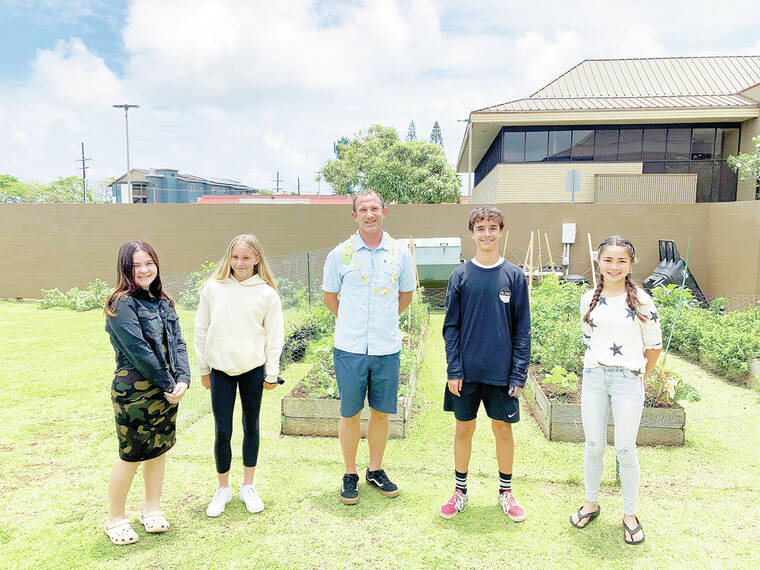LIHU‘E — Hawai‘i is on the verge of gaining a new state symbol, thanks to the hard work of Kaua‘i middle-school students.
Kids at Hawai‘i Technology Academy, a charter school on Kuku‘i Grove Street in Lihu‘e, participated in a statewide effort to name ‘ohi‘a lehua (Metrosideros polymorpha) the state endemic tree.
Senate Bill No. 2059, which state legislators passed earlier this month, does just that. It now awaits Gov. David Ige’s approval.
“To be part of local government and know they influenced a state constitution — to leave a legacy — I think that’s left a big impression on my kids,” Hawai‘i Technology Academy science teacher Drew Cohick told The Garden Island.
‘Ohi‘a lehua’s endemic status — it grows naturally on the six largest Hawaiian Islands, and nowhere else — is an important distinction.
That’s because kukui, or candlenut (Aleurites moluccana), is already the state tree of Hawai‘i.
But unlike ‘ohi‘a, kukui was brought to the Hawaiian Islands by human hands, as one of Polynesian voyagers’ canoe plants.
The push to make ‘ohi‘a a state symbol stemmed from threats to the tree’s future.
Organizers at the Coordinating Group on Alien Pest Species, a project of the Research Corporation of the University of Hawai‘i, saw it as an opportunity to raise awareness of rapid ‘ohi‘a death while engaging young people.
ROD, a disease caused by the fungus ceratocystis, has killed hundreds of thousands of ‘ohi‘a on Hawai‘i Island. It’s also found on O‘ahu and Kaua‘i, where it was first detected in 2018.
“Students oftentimes feel like they may not be able to participate, whether it’s because they think they’re too young or they don’t know enough about a subject,” CGAPS Planner Kailee Lefebvre told The Garden Island.
“This project is proving that’s absolutely incorrect,” Lefebvre continued. “They have the knowledge and the power … They can absolutely create change.”
Cohick’s classes joined more than 500 students in 10 schools throughout the state who actively participated in the CGAPS project.
The Kaua‘i students identified wild ‘ohi‘a in Koke‘e, where they removed invasive strawberry guava with personnel from the Kaua‘i Invasive Species Committee and the Kaua‘i Forest Birds Recovery Project.
They also studied the ecological and cultural significance of ‘ohi‘a and honed their persuasive writing skills before contacting state legislators.
Lawmakers who responded included state Rep. David Tarnas of Hawai‘i Island (North Kohala, South Kohala and North Kona), state Senate President Ron Kouchi (Kaua‘i and Ni‘ihau) and state Rep. Jimmy Tokioka (Eastside and portions of South Shore on Kaua‘i).
Tokioka called in from the State Capitol on O‘ahu to speak with his young constituents. “They asked a lot of great questions, and they were very, very passionate about the bill,” he said in a recent interview. “It was an honor to help them navigate (the legislative process), send in testimony, and they did all of that.”
Kaua‘i students and their peers ultimately submitted 1,225 individual pieces of testimony across four legislative hearings.
Hawai‘i Technology Academy midde-schoolers Lilly Corpuz, Cedric Crampton-Nabaa, Ashlyn Worley and Peyton Fontanilla expressed hope, eagerness and curiosity, the day after legislators sent SB2059 to Ige’s desk.
“Now a lot more people are going to know about (‘ohi‘a and ROD),” Crampton-Nabaa said.
“Yeah, and be able to help out,” his classmates chimed in.


